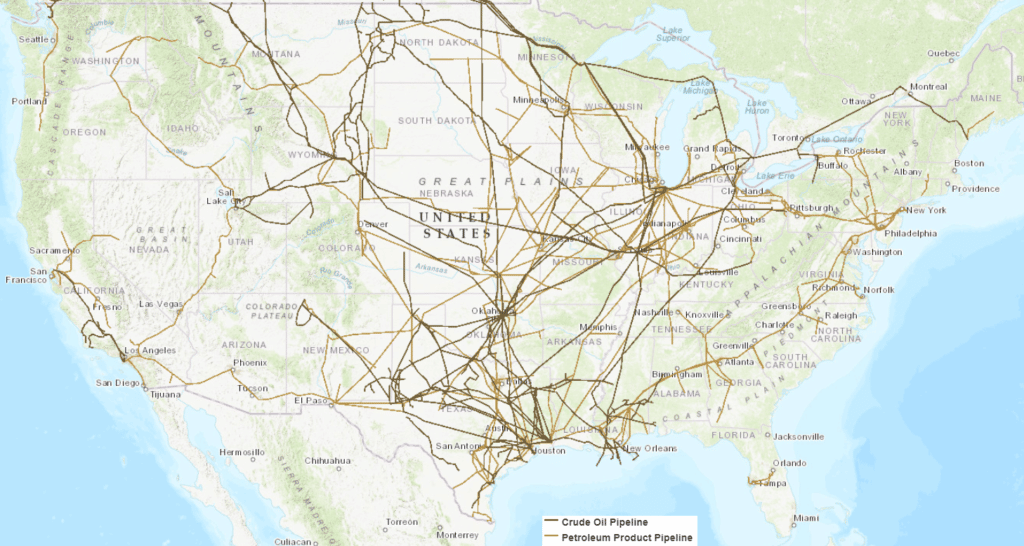With August over and September just starting, we are in the middle of hurricane season. Some seasons have worse impacts than others. Hurricane Harvey and Hurricane Katrina’s $125 billion paths of destruction won’t be easily forgotten, while Hurricane Isaac’s $3 billion in damages aren’t top of mind. Tropical Storm Gordon has already made landfall and dissipated into major rainfall for the South of the United States, but weather experts project more tropical storms will develop. We can cross our fingers for the best, but it’s always better to prepare for the worst.
What’s the difference between a tropical storm and a hurricane?
Let’s start with the basics. A tropical storm is a large storm that begins as a tropical depression and grows larger over the ocean. A tropical depression that reaches a wind speed of 39 miles per hour becomes a tropical storm. When the wind increases further and reaches over 74 mph it becomes a hurricane. Both are capable of catastrophic damage.
How do major tropical storms and hurricanes impact the fuel industry?
Every storm is different. Its impacts can include one part of supply chain or all of them. Harvey traveled slowly on a wide path of destruction, affecting every piece of the Gulf of Mexico infrastructure, which is responsible for 17% of total U.S. crude oil production. Impacts can include:
Oil platforms
These are a relatively low impact as they typically stop running only until the storm passes. In the event of category 5 hurricane conditions (wind speeds exceeding 156 mph) platforms can move, causing spills and requiring more drastic repairs.
Refineries
Tropical storms highly impact these. As they’re more susceptible to damage, they’re often limited to lower capacity until repairs can be made. Flooding from storms can be even more disruptive to refineries.
If refineries don’t shut down and seal up quickly enough, flooding can damage internal mechanicals. After the damage from Hurricane Katrina, refineries are more cautious to shut down and avoid exposure to floods. Flood waters also take time to recede, delaying reopening. Workers can’t return to refineries until they can open the building without threat of flooding. But, even before that, workers need to be able to drive to refinery itself, and electric service must be restored that area. Additionally, extended problems with restarting equipment often slow the refinery reactivation process.
Flooding can also damage the waterways that refineries depend on. Much of the crude oil refined into gasoline is delivered by tanker. Clearing waterways can require a lot of time, especially when debris is washed into waterways, adding further hazard. While smaller boats may be allowed to travel the waterways in days or weeks, larger ships often must wait for authorization before they can enter ports to deliver crude to refineries.
Pipelines
Flooding and refinery shutdowns can impact pipelines that carry finished gasoline to many parts of the nation from the Gulf Region.

Source: U.S. Energy Information Administration
Pipelines depend on constant pressure to operate. When they are shut off due to refinery shutdowns, it takes time to bring them back into operation. Much like refinery equipment, the process to bring them online can be tedious and problems can extend restart times. Restarting pipelines may incur damage, requiring additional time for repairs. That is, if the floodwaters are low enough to allow maintenance to get to the affected areas.
What does this mean for businesses in coastal areas?
Tropical storms can cause major disruption to coastal areas. Most areas of the U.S. only have gasoline on hand for 1-2 days of regular consumption. This has historically caused shortages in impacted areas. When an evacuation occurs:
- Fuel demand sharply increases – Everyone fills up their tank and reserves, burning all the fuel they need to travel to safety.
- Replenishing the supply takes time – Roads aren’t always open and distribution points for replenishing gas stations are often inaccessible.
The impact? Regional prices of fuel can spike by 20% or more in some cases. Disruption to fuel supply is usually localized and prices gradually return to normal as supply channels are restored.
What does this mean for businesses in the rest of the country?
The Gulf Coast is home to many major refineries and makes up about 46% of U.S. refining capacity. When these are damaged or closed, it has a direct effect on retail gas prices. Standard economic principles apply – disruption of supply will drive prices up. While regional impacts on fuel are quickly realized, the national impact normally takes a little longer to appear at the pump.
What’s the projected impact of Hurricane Gordon?
Thankfully, only a couple of refineries sat in Hurricane Gordon’s path. With such a small impact, local gas prices didn’t skyrocket and oil futures haven’t moved significantly. Now a tropical depression, Gordon is forecasted to turn North and eventually Northeast by end of week. Potential flash flooding could impact the major petroleum pipelines feeding into the Mid-West.
When does Hurricane Season end?
Peak hurricane season starts in mid-August. During this time, storms feed into the trade winds and the ‘train of storms’ starts to cross the Atlantic basin. One hurricane, Florence, has already been identified while two other systems might form in a few days. Peak hurricane season normally stretches through October, but storms can occur all the way through November.
How can your company adapt to the changing price of gas?
Having a flexible vehicle program is key for adjusting to the unexpected. Company-provided car programs and flat allowance vehicle programs are two of the least flexible options. If you’re looking for a vehicle program that can grow with your company and stabilize in the event of emergency, learn more about personalized mileage reimbursement.







